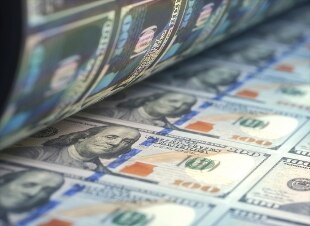The wait for the Federal Reserve depresses the stock exchanges
United States, Jerome Powell confirmed as head of the Fed
Share
December 15, 2021 "The path of the economy continues to depend on the course of the virus". This is what we read in the final statement issued after the Fed meeting, according to which "the progress in vaccinations and the easing of supply constraints are expected to support the continuous increase in economic activity and employment, as well as a reduction in inflation ". However, the Fed warns, "risks to the economic outlook remain, including those stemming from new variants of the virus."
Inflation is no longer transitory
The Federal Reserve has decided, as previously said by President Jerome Powell, to no longer define the price increase as "transitory". Until the last meeting in November, the Fed had reiterated that "inflation is high, but largely reflects transitory factors". According to the US Central Bank, the imbalances between supply and demand caused by the pandemic have contributed to the significant increases in prices.
The Federal Reserve has sharply revised its inflation expectations upwards to 5.3% over 2021, 2.6% over 2022, 2.3% over 2023 and 2.1% over 2024.
Monthly bond purchases fall
As expected, the meeting of the Federal Reserve's Monetary Policy Committee led to an acceleration of so-called 'tapering' with a reduction in bond purchases, which fall to $ 30 billion per month ($ 20 billion for Treasury securities. and $ 10 billion for agency mortgage-backed securities), a level that will lead the intervention program to end in March instead of June.
Leaving federal rates at between 0 and 0.25%, the Fed now expects three increases in 2022, compared to the only increase expected in September: at the end of next year, therefore the level of federal rates should be around 0.9. %. In the new forecast, the central bank raised its estimate for inflation in 2022 from 2.2 to 2.6%, while the growth of the US economy is expected to slow to 4% next year from the 5.5% estimated for 2021.
Furthermore, starting next January, the Committee will further increase to reduce the monthly pace of its purchases of Treasury securities to at least $ 40 billion per month, while purchases of agency mortgage-backed securities will amount to at least $ 20 billion. dollars a month. This is because, the note points out, the Fed Committee "believes that similar reductions in the pace of net asset purchases are likely to be appropriate each month", yet the Fed "is ready to adjust the pace of purchases if justified by changes in the economic outlook" .
US GDP + 5.5%, unemployment at 4.3%
The US economy will grow by 5.5% in 2021, and then slow down to + 2.6% in 2022 and to 2.3% in 2023. This is what the Fed predicts, estimating an unemployment rate at 4.3%. 'year.

